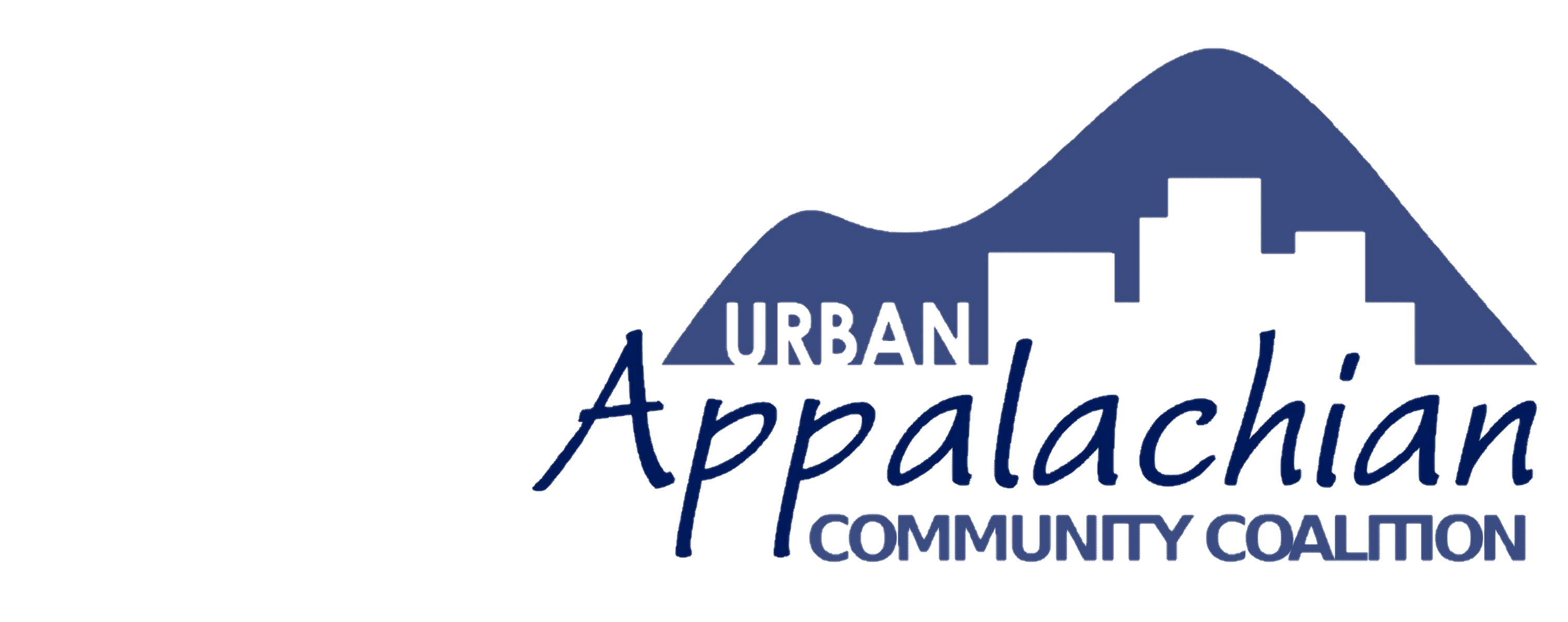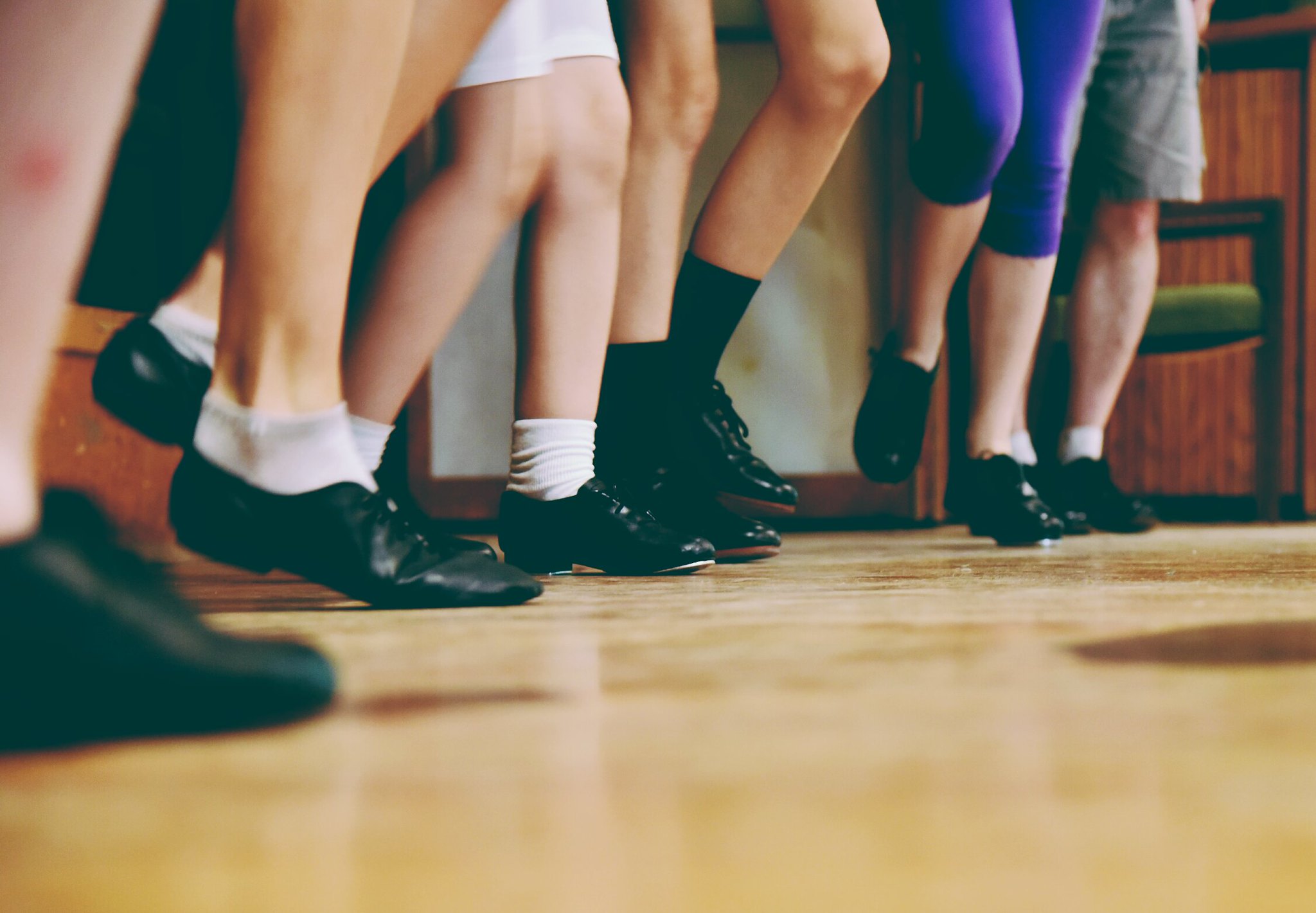By Mike Templeton
One of the biggest draws at the annual Appalachian Festival is dancing. Both formal demonstrations and the informal movement of people at performances, dancing is a central feature of the festival for the simple reason that dancing is a central feature of Appalachian culture. The Urban Appalachian Community Coalition highlights all aspects of the arts, and if it ever appears that dance is overlooked, this can only be because dance is so intimately a part of Appalachian life that we forget to talk about it. Yet, because dance is so important to Appalachian culture in all its many forms, it seems important to devote some space to discussing some of the major forms of Appalachian dance.
You might think that a quick survey of Appalachian dancing would be fairly simple, and you would be dead wrong. Dance in Appalachia turns into a universe of styles and histories that could easily cascade into a book-length study. Thankfully, there is one: Communities in Motion: Dance, Community, and Tradition in America’s Southeast and Beyond by Susan Eike Spalding and Jane Harris Woodside is listed as the primary text by Appalachian State University along with their own expansive list of dance forms on their own website. For the sake of this article, we will keep it short.
Perhaps the most famous Appalachian dance style, and one most people will think of when we talk about Appalachian dancing, is the old-fashioned square dance. Square dancing was once so popular in the United State that it was taught in public schools. The square dance consists of four couples, eight dancers in total, arranged facing each other to form a square. The moves and choreography follow what is known as a “caller” who will call out specific movements and steps according to an often pre-arranged dance. People are probably familiar with the “do-si-do” and promenades from popular culture, and these calls direct dancers to move around and between each other in ways that can become quite complex, though a good caller keeps everyone organized. Square dancing has its origins in the old English Morris dances and in a French traditional folk dance called a quadrille. Morris dancing still persists in some parts of the country, particularly in New England, which is why New England has also developed its own styles of square dancing.
There are forms of Appalachian dance that are often performed in more spontaneous fashion, and can be done in groups or alone. Step dancing, flatfooting, buck dancing, and clogging are often lumped together as variations of the same thing. That said, people who have become steeped in these traditions will immediately argue that each of these styles is unique. Step dancing and flatfooting are in fact basic variations of the same thing. Flatfooting is difficult to define because it basically consists of a fast paced tap and stomp style of foot movement while keeping much of the rest of the body tightly contained. Flatfooting is also often called mountain step dancing, although this is another sticky point that can be argued. People have probably seen flatfoot dancing at just about any bluegrass performance since it is the style most common to anyone who feels the need to dance on their own.
Charlie Burton is perhaps the most famous flatfoot dancer. He began when he was two years old and continued performing and participating in competitions until he was almost 80. According to Burton, flatfooting has its origins in the traditional dances of the indigenous people of the southern Appalachian region (more on this below). To this day, many flatfooters sprinkle cornmeal on the floor to dance like Charlie.
Clogging is the more formal cousin of flatfooting. Clogging consists of formal steps and movements which are performed by dancers in a way that is synchronized with music. Cloggers most often wear a special type of shoe which is designed to make the percussive sound which accompanies the music and the dance. This is similar to tap dancing, but there are differences. Like tap, it can be quite complex. Appalachian clogging has its origins in European contra dances and step dances, but the Appalachian evolution of the dance has been heavily influenced by African dances and styles.
These well-known Appalachian dances have been so heavily influenced by African and African American culture that there is simply no way to tease them apart. Appalachia merged Europe and Africa in ways few other regions of the United States could, and the results have been some astounding styles of dancing.
While African influences helped shape flatfooting and clogging, they also gave rise to styles and forms that are completely unique. The Charleston, the Two-Step, the Black Bottom, the Sand, the Hucklebuck, the Slow Drag, the Jitterbug, and the Electric Slide all have origins in Black Appalachian cultural life and can be traced in one way or another to African traditional dance forms. Black and Indigenous people have been historically excluded from the historical narrative of Appalachian dance culture, and in recent years scholars have taken steps to correct this problem. Institutional racism dominated the study of Appalachian culture for a very long time, and it is part of the contemporary work of groups like UACC to amend this problem. This is why the annual Appalachian Festival sponsored by the Appalachian Community Development Association includes cloggers, flat footers, Charleston dancers, and Native American Drum.
Dance has become so deeply associated with Appalachian folklife that it inevitably became drawn into American high culture. Perhaps the most famous pairing of classical music and dance to depict Appalachia is in relation to Aaron Copeland’s symphony Appalachian Spring. Copeland originally composed the music for a ballet by Martha Graham called Appalachian Spring. Copeland simply titled his symphony as “A Symphony for Martha,” and in truth, he had no real thoughts of Appalachia when he composed the work. The ballet had its debut in 1944, and over the decades the music has become one of the most recognizable symphonic works, and one that finally brought images of Appalachia, classical music, and ballet together into one of the most memorable works in American music. Whether it has any roots in traditional Appalachian folklife is open to debate. That it is part of the popular imaginary of Appalachia is beyond dispute.
Like so many things that are a part of Appalachian culture, dance is accessible to anyone. When you hear mountain music, in any of its forms, it is a good bet you will feel the need to move, and that is really what Appalachian dance is all about. The flatfooters simply burst into stomping. The cloggers may require more space. And square dancing requires planning. But the reason Appalachian dancing is called folk dancing is because it is the dance of the people. If you have ever been to any of the celebrations hosted by The Urban Appalachian Community Coalition, you have seen people dancing. The Appalachian migrants who came to greater Cincinnati and eventually came to define what we now call urban Appalachians brought the dances with them as sure as they brought the music.
You can access information about Cincinnati’s own Appalachian dancers and callers in our Cultural Resource Directory by putting “dance” in the search bar.
The 2025 Appalachian Festival sponsored by The Appalachian Community Development Association will be held Mother’s Day Weekend as always, but for the first time ever in downtown New Richmond. And yes, it will include dancing. Information at https://www.appalachianfestival.org/.
You can read more about flatfoot dancer Charlie Burton in this article: “With 8 decades of experience, flatfoot dancer shares passion.” https://apnews.com/general-news-c31b12dc1ddb4dfaa82a72c1fd5b0864.
You can watch the Cincinnati Symphony Orchestra Perform Aaron Copeland’s Appalachian Spring the CSO Facebook page at this link: https://www.facebook.com/CincySymphony/videos/402892769104927/.
There are numerous videos of Appalachian dances on Phil Jameson’s website at this link: https://www.philjamison.com/dancer-videos.
Cover photo by bobglennan on Flickr used under CC BY-NC 2.0. No changes were made.
Michael Templeton is a writer, and independent scholar. He is the author of The Chief of Birds: A Memoir published with Erratum Press and Impossible to Believe, published by Iff Books. He is also the author of Collected Apoems, forthcoming from LJMcD Communications and the awaiting of awaiting: a novella, with Nut Hole Publishing. Check out his profile in UACC’s Cultural Directory. He has published numerous articles and essays on contemporary culture and works of creative non-fiction as well as experimental works and poetry. He lives in West Milton, Ohio with his wife who is an artist.

